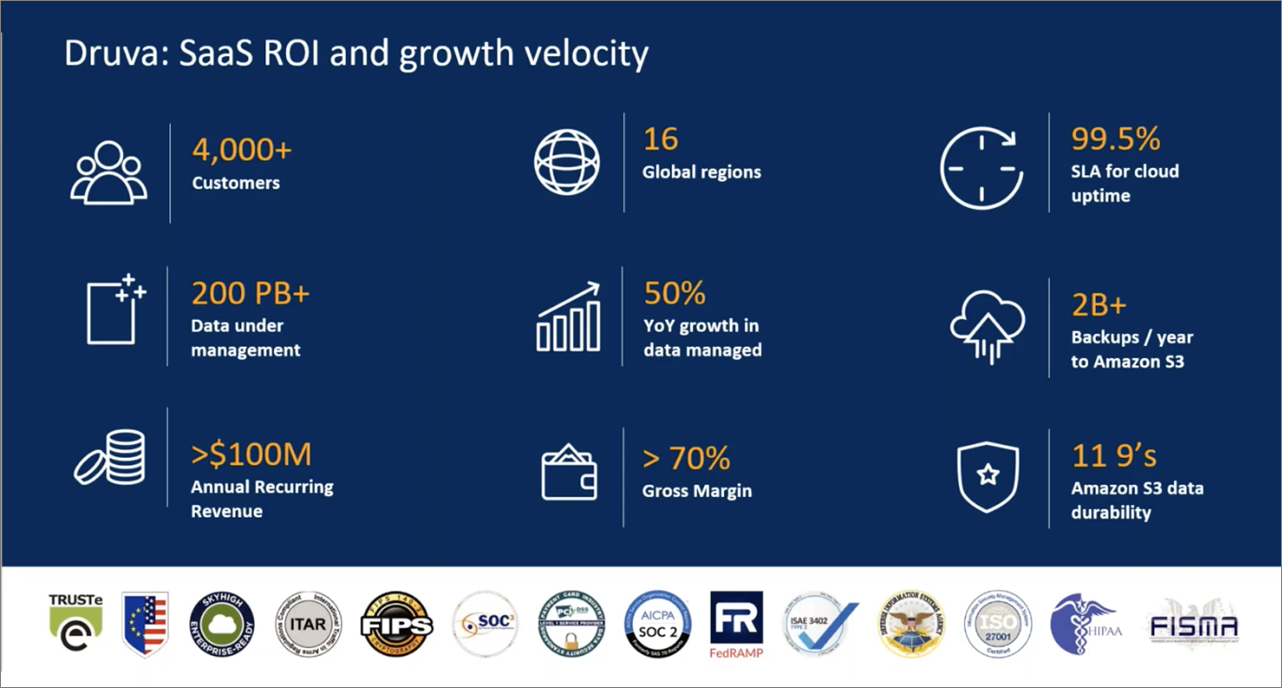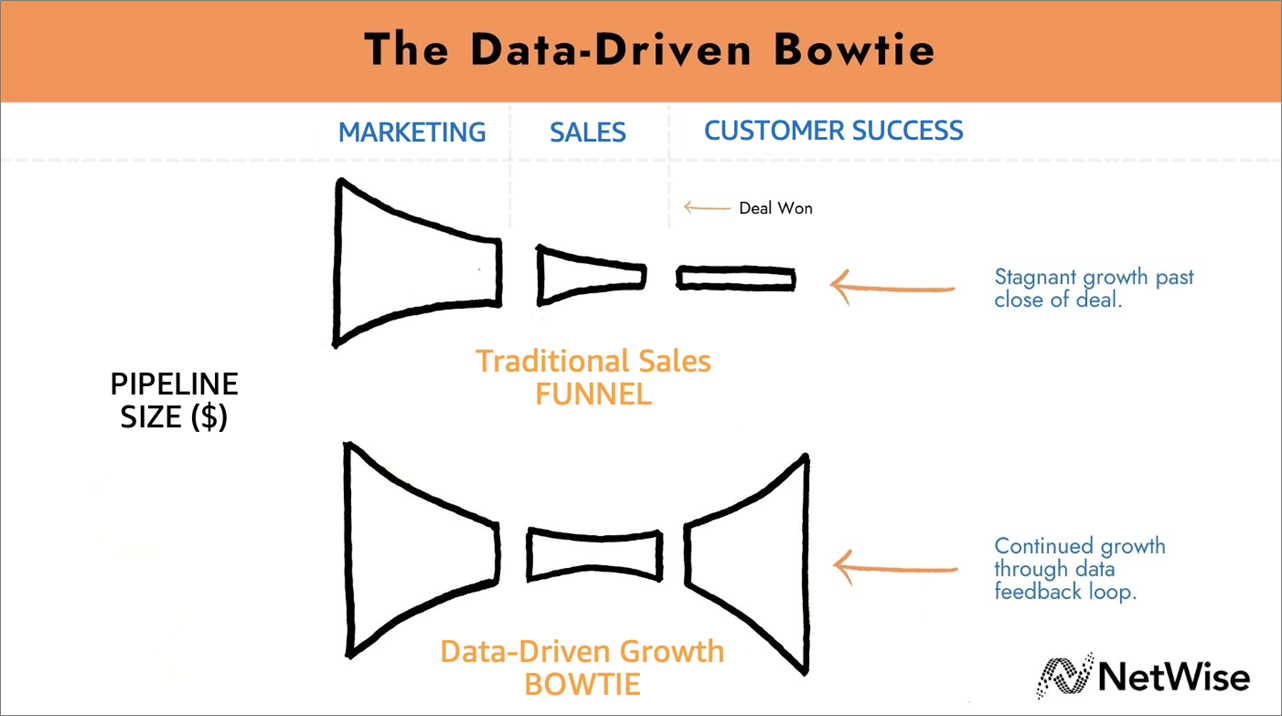AWS Partner Network (APN) Blog
Behind the Scenes: What Makes a SaaS Organization Successful on AWS?
By Merve Soner, SaaS Business Lead at AWS
What does it take to build and run a successful software-as-a-service (SaaS) business on Amazon Web Services (AWS)?
This is a question the AWS SaaS Factory team gets often during our conversations with AWS Partners and customers who are moving to SaaS. There are various factors that impact an organization’s success, including product/market fit, customer experience, go-to-market (GTM) strategies, the ability to scale, and pace of innovation, to name a few.
While there is no single formula, we have been observing some common patterns and strategies that help organizations maximize SaaS success.
In a recent webinar series, AWS SaaS Factory demystified some of the common patterns and strategies with AWS Partners Druva, NetWise, Stripe, Crowdstike, and Snowflake.
All of the webinar sessions are available on-demand, and we invite you to check them out and hear from industry leaders who have navigated the different aspects of SaaS success.
In this post, I will summarize the key learnings from the series to help you understand:
- Why organizations build SaaS.
- How they transform organizational structure to support the SaaS delivery model.
- How they scale growth via sustained innovation and an engaged partner ecosystem.
- How they optimize operations and refine business strategies to become a best-of-breed SaaS company.
Whether you are just starting out your SaaS journey, or are part of a mature SaaS organization already, I encourage you to evaluate your organization’s approach to launching and operating SaaS and think how these learnings might influence your organization’s strategy.
1. Understand the Business Opportunity and ROI to Build SaaS
Demand for SaaS applications is accelerating and software builders are looking at SaaS as a primary business model to reach customers and scale their growth.
Forrester research shows that SaaS is now the number one technology area that businesses are investing in as part of their digital transformation journeys. The goals, challenges, and drivers for building SaaS depend on various factors related to your business strategy.
In the first episode of the webinar series, Prem Ananthakrishnan, VP of Product at Druva, shares their decision making process to build SaaS. “We saw an opportunity to go and solve customer problems, but at the same time we realized a competitive advantage in building a SaaS platform,” says Prem.
As many organizations do, Druva faced the dilemma of whether to build on private or public cloud infrastructure. Development agility along with the ability to scale, technology maturity, and industry leadership were key reasons behind Druva’s decision to build SaaS on AWS.
The SaaS delivery model enabled Druva to offer flexible pricing options, availability and resiliency, cost savings, increased customer satisfaction, and faster time to value . This helped Druva generate $100M+ annual recurring revenue (ARR) and 70% gross margin.
Figure 1 – Druva’s SaaS ROI and growth velocity.
My key takeaway from this session was whether you target to expand your business globally, meet customer demand with agile and flexible SaaS solutions, gain competitive advantage, or achieve cost efficiencies, it’s important to understand the financial impact and business opportunity for your organization.
Doing this will help you understand the “why.”
Watch episode #1 with Druva >>
2. Align the Organizational Structure to a SaaS Model
Managing the cultural and organizational transformation aspect of SaaS is often overlooked.
A SaaS business model requires new skills, knowledge, and tools to support faster customer growth and agility. This not only applies to product and engineering teams, but should be embraced by the entire organization—from sales and marketing to customer success and operations.
In the second episode, T. Brian Jones, CTO at NetWise, talks about their journey to build a new SaaS B2B Audience Data Platform. I enjoyed Brian’s emphasis on how NetWise challenged and reevaluated their operational model, roles and responsibilities of each team, and the effectiveness of communication among various teams.
As they moved to a SaaS model, the NetWise customer support team evolved to a proactive customer success organization, closely working with the product team to understand the analytics and how people are using their platform.
Figure 2 – NetWise data-driven sales model.
NetWise has built a data-driven bowtie sales model which accounts for the lifetime value of a SaaS customer. They embraced a model where marketing, sales, and customer success are all revenue sources, and the traditional sales funnel isn’t the end of the customer lifecycle.
Watch episode #2 with NetWise >>
3. Accelerate Growth Through Innovation and Partners
SaaS impacts the entire customer journey and how they evaluate, procure, and use software. This shift in customer behavior impacts how SaaS organizations innovate and develop GTM strategies to scale growth.
In the third episode of the webinar series, we hosted sales and alliances leaders from CrowdStrike, Snowflake, and Stripe in a panel discussion.
A few common patterns I took away were:
- Each of these companies has seen their product portfolio evolve over time and reach out to new audiences, significantly expanding the total addressable market (TAM).
- They all launched channel/partner programs to accelerate product adoption and deliver the full value of cloud GTM motions.
- They were able to leverage various AWS Partner Network (APN) benefits and AWS Marketplace to shorten the sales cycle and accelerate growth.
Stripe was founded in 2010 with a focus on accepting credit card payments online for businesses in the U.S. Stripe’s product portfolio has expanded over the years and now includes subscription management, in-person terminals and new payment methods to accept payments, and a platform to enable payments to third parties.
“Stripe has managed 173 billion API requests in the last 12 months and is available in 47 countries,” says KJ Jensen, Head of Platform Sales at Stripe.
Snowflake started as a data warehouse solution in the cloud, leveraging the elasticity and other benefits of the AWS Cloud. In the last nine years, Snowflake Data Cloud evolved to more than a data warehouse.
“Customers have been using Snowflake for data engineering, data science, and data sharing. We generate $1B+ ARR and see 100% year over year growth,” says Colleen Kapase, SVP of WW Partner and Alliances at Snowflake.
AWS Marketplace has played a key role in Snowflake’s growth by accelerating time to market and streamlining procurement for their customers. Snowflake launched its own partner program in 2020 to scale growth with service partners, technology partners, and data providers.
Another interesting story was from Jessica Alexander, VP, Cloud Product Sales and Alliances – Amazon at CrowdStrike. Jessica spoke about their ability to leverage multiple APN and AWS Marketplace benefits to capture a new addressable market faster and at a much larger scale.
CrowdStrike made their solution available on AWS GovCloud (US) and become an AWS Public Sector Partner to support government customers. They have earned the AWS Security ISV Competency and become an AWS Marketplace Seller.
By leveraging private offers and enterprise contracts on AWS Marketplace, CrowdStrike was able to accelerate transactions for their customers and focus on scale and automation of procurement process. “We are currently seeing that our transactions are 33% faster when they go through AWS Marketplace,” says Jessica.
Watch episode #3 with Stripe, Snowflake, and CrowdStrike >>
4. Realize the Full Potential of SaaS
Most of the time, getting to a SaaS delivery model is just the start of the journey. Successful SaaS organizations are continually re-assessing their ability to provide a rich service experience, respond to customer needs, react to market trends, and put themselves in a position to be continually innovating.
After sitting down with AWS Partners to understand various aspects of building and running successful SaaS businesses, we wrapped up the webinar series with best practices and strategies for realizing the full potential of SaaS, shared by Tod Golding, Principal Partner Solutions Architect, AWS SaaS Factory.
In the final episode, Tod explored some of the key areas where we see lines between “Good SaaS” and “Great SaaS.” If you are in the early phases of your SaaS journey, the path from good to great may impact how you prioritize and approach the operational and agility needs of your business. For established SaaS companies, this may be more about identifying targeted areas where you might want to refine your SaaS strategy.
My key learnings for realizing the full potential of SaaS were:
- Embracing “as-a-service” mindset.
- Adopting a strategy and execution model to support exponential growth.
- Defining new metrics that are aligned with SaaS delivery model and aligning them to business goals.
- Reimagining the entire customer experience to deliver value.
Watch episode #4 with Tod Golding from the AWS SaaS Factory team >>
Conclusion
While this is not an exhaustive list of strategies to help you build and run a successful SaaS business on AWS, it should give you an idea on some of the key areas to focus on.
For further reading on successful SaaS businesses, check out customer success stories on our new SaaS on AWS website, explore our recent ebook titled Good to Great: Maximizing your SaaS Success, and read the blog post Getting Out of Your Own Way: How to Avoid Common SaaS Pitfalls.
About AWS SaaS Factory
AWS SaaS Factory helps organizations at any stage of the SaaS journey. Whether looking to build new products, migrate existing applications, or optimize SaaS solutions on AWS, we can help. Visit the AWS SaaS Factory Insights Hub to discover more technical and business content and best practices.
SaaS builders are encouraged to reach out to their account representative to inquire about engagement models and to work with the AWS SaaS Factory team.
Sign up to stay informed about the latest SaaS on AWS news, resources, and events.

